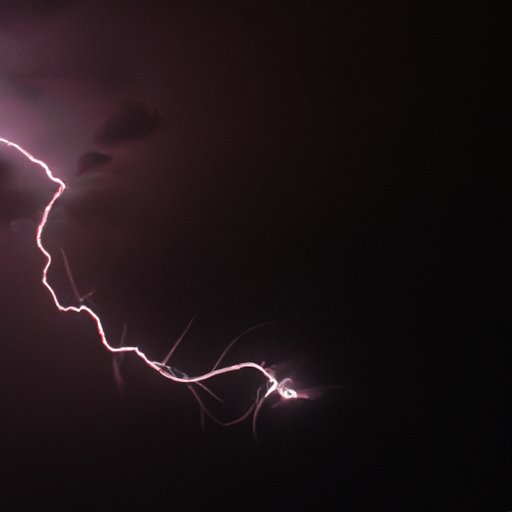Introduction
Thunderstorms are fascinating displays of the power of nature, and the most striking feature of thunderstorms is undoubtedly lightning. While many of us may simply enjoy watching lightning from the safety of our own homes, have you ever taken a moment to wonder why lightning occurs in the first place, or how it affects our planet? This article aims to explore the science behind lightning, its historical perspectives, and the impact of global warming on lightning. You’ll learn about the myths and misconceptions surrounding lightning, as well as practical tips on staying safe during a thunderstorm. Whether you’re a weather enthusiast or simply curious about the world around you, keep reading to discover more about the wonders of lightning.
The Science behind Lightning
Lightning is a natural electrical discharge that occurs when the buildup of electrical charges in the atmosphere is released. Thunderstorms are the most common cause of lightning, and the heat generated by the storm creates the necessary conditions for electrical discharge.
The exact atmospheric conditions that create lightning are complex, but involve the buildup of electric charges in the clouds. These charges can come from a variety of sources, including the friction between ice particles within the cloud, and collisions between ice particles and liquid droplets. As these charges build up, they create an electrical field within the cloud.
When the difference in electrical potential between the cloud and the ground below reaches a critical point, a discharge occurs. This discharge creates a channel of ionized air, which we see as a bright lightning bolt. The heat generated by the electrical discharge also heats the air around it, creating the sound of thunder.
Lightning in Historical Perspectives
Throughout history, lightning has been viewed in different ways by different cultures. Ancient cultures often believed lightning to be a manifestation of the gods, and as such, lightning was often feared and revered. In Norse mythology, for example, the god Thor was said to ride across the sky on a chariot pulled by goats, wielding a mighty hammer that would create lightning when thrown.
More recent scientific studies have helped us to understand the mechanics behind lightning, and debunk some of these ancient beliefs. However, lightning remains a fascinating and awe-inspiring natural phenomenon, inspiring scientists and poets alike.
The Physics Behind Lightning Strikes
When lightning strikes the ground, it can cause a range of effects, from mild tingling sensations in the skin to serious injury or death. The path of the electrical discharge is determined by various factors, including the resistance of the materials it encounters and the shape of the land.
The electrical current generated by a lightning strike can cause fires and other damage to the environment. In particular, lightning strikes can be a leading cause of wildfire in areas with dry vegetation and high temperatures.
The Impact of Global Warming on Lightning
As our planet’s climate continues to change in response to human activities, we are seeing increasing evidence of the impact of global warming on weather patterns, including thunderstorms and lightning strikes. While research in this area is ongoing, some studies suggest that warmer temperatures may lead to more frequent and more intense thunderstorms and lightning strikes.
Changes in weather patterns may also impact the geographic distribution of lightning strikes, with some areas becoming more prone to thunderstorms than others. Studies have also shown that changes in land use, such as deforestation, can lead to changes in atmospheric conditions and may increase the risk of lightning strikes.
Lightning Myths and Misconceptions
There are many myths and misconceptions surrounding lightning, and believing these can be dangerous during a thunderstorm. One common myth is that lightning never strikes the same place twice. In reality, lightning can strike the same place repeatedly, particularly if it is a tall object that is particularly prone to lightning strikes.
Another myth is that rubber-soled shoes can protect you from lightning. While rubber is indeed an insulator, it does not offer enough protection from the high voltages involved in a lightning strike. Staying indoors during a thunderstorm, or seeking shelter in a car or building, is the best way to stay safe.
Safety Tips During a Thunderstorm
If you are caught outside during a thunderstorm, there are several safety tips you should keep in mind. First and foremost, seek shelter as quickly as possible. Avoid open fields, tall objects, and bodies of water, as these are high-risk areas for lightning strikes.
If you are unable to find shelter, crouch down low to the ground, making yourself as small a target as possible. Avoid touching the ground with your hands, as lightning can travel through the ground. If someone near you is struck by lightning, call for emergency medical help immediately.
Conclusion
Lightning is an awe-inspiring natural phenomenon that has fascinated humans for thousands of years. While ancient cultures may have attributed it to the power of the gods, modern science has helped us to understand the physics behind lightning strikes. We now know that lightning can have both positive and negative impacts on the environment, and that global warming may be contributing to changes in weather patterns that could increase the frequency of lightning strikes. By understanding the myths and misconceptions surrounding lightning, and following common-sense safety tips during thunderstorms, we can continue to marvel at the power of nature while keeping ourselves safe.
